Employee Retention Tax Credit: How Much Money Can You Get?
So, you heard that the government approved the Employee Retention Tax Credit (ERTC) with the CARES Act.
This means the IRS may give you money to help you recover from the havoc COVID-19 caused your business in 2020 and 2021. The ERTC is to help business owners support their staff, retain employees, and recover their payroll if they took a financial hit during the pandemic.
You can get this tax credit even if you got the PPP, PPP2, Restaurant Revitalization Fund, or Shuttered Venue Operators Grant.
If you had employees there is a good chance you qualify.
The big burning question we want to get to, of course, is how much do you qualify for? In other words: is this worth paying attention to?
How to Know you Qualify for the Employee Retention Tax Credit
Before you know how much you qualify for, it’s important to understand whether or not you qualify at all.
Even though specific eligibility requirements for the ERTC are complex, there is a high likelihood your business qualifies if you have employees and were affected by COVID-19 during 2020 and 2021.
Below is a shortlist of key qualifiers. You don’t need to have all of these, but if you have the first one plus one other thing on the list, there’s a high likelihood the IRS has set aside money for your business and is simply waiting for you to claim it.
- You have employees on payroll (W-2 employees).
- You experienced a sales decrease in 2020 or 2021
- You had to change the way you do business, limit capacity, partially shut down
- You had to simply modify the way you do business in order to comply with Covid regulations, even if you weren’t shut down
- Your suppliers were unable to deliver critical supplies to you because they were shut down.
- You started a business in 2020.
If your business was partially or completely shut down during COVID-19, there’s a very good chance you qualify for this tax credit. What qualifies as a partial shutdown is broader than you might expect.
Warning: there is information out there saying you must have been fully shut down by the government or been forced to make significant modifications to get this credit. This information is false. According to IRS.gov, there are many factors to take into consideration. Even if all of your operations were allowed to continue you can still be eligible for credit.
So, what do you think? Do you qualify? If so, keep reading to answer that big burning question.
How Much Do I Qualify For?
We get it. Just because you qualify on paper doesn’t necessarily mean you think it’s worth it to go through the process if the return will feel like pennies. So qualifying isn’t enough. You want to know how much you qualify for.
The numbers can be astounding.
Your return is going to depend on the size of your business, the number of full-time employees you have, and how much your business was impacted by COVID-19.
- Some pointers to help understand if the amount you qualify for is worth it are:
- In 2020, it can be as much as $5,000 per employee.
- In 2021, the amount increases to $7,000 per employee. PER QUARTERS.
- So that means up to $28,000 in a year. Per employee.
*Maximum eligible amount not yet determined but will be subject to state law limitations on what percentage
This is a lot of “it depends” – so if you want a simpler direct picture based on your numbers, we recommend using our ERTC Tax Credit Calculator to get a better idea of what your tax credits are based on your business.
How do I Get My Employee Retention Tax Credits?
If you’re thinking you qualify for the ERTC, it’s time to get the ball rolling. Just like PPP, this money will run out.
Of course, your question is, “How?” The answer is, “it depends”.
There are different forms and different processes required for different time periods.
For periods that have already passed, we can go back in time and amend returns, and request a refund. So even if you missed your credits in 2020 or the first part of 2021, we can go back and retroactively determine what you are owed and request that from the IRS.
For current periods there are a couple of ways to request the money.
The most common way is to include the request on your current quarter’s payroll tax filings. You will have to provide your qualified wages, your non-refundable credit, and your refundable credit amounts. You’ll also need to re-calculate your quarter’s weekly or semi-weekly payroll tax liability to adjust accordingly for the payroll tax portions.
Another way is to request an advance. This involves faxing a form 7200 to the IRS. The 7200 will have to be reconciled with your quarter-end 941.
Another way to get the funds is to reduce your payroll tax deposits by the amounts during the quarter. Again, this will have to be reconciled at the end of the quarter on your 941.
In each scenario, once completed the IRS will send you a check for the amount in excess of any credits you received during the quarter.
Should You Have Your CPA Do It?
Much like doing taxes without a CPA, applying for this credit without a CPA that specializes in this specific credit could hurt your chances to receive the most money back. Or worse, make an error that puts you at risk for an audit.
This is a new type of credit. Even most CPAs don’t understand the complex loopholes & jargon yet to be able to secure you the most money.
This is why we recommend going with a company that specializes in the nuances of the Employee Retention Tax Credit to secure your return. We have phenomenal CPA’s referring their clients to us daily because we’ve studied the ERTC inside and out to understand the loopholes and get our clients the biggest return possible.
If you schedule a call with our team, we can discuss the nuance of your eligibility in more detail, simplify the complexity for you, and figure out how much you’re eligible to receive.
We’ll review your situation with you. If we think you qualify and we both agree, we’ll walk through our exact process to help you get the refund.
If we both decide to work together you don’t have to pay anything upfront, and everything we do comes with a 100% lifetime audit support guarantee.
This means you have nothing to lose by scheduling a call with us to see if we can help you secure your tax credit.
Employee Retention Tax Credit: Qualifying with a “Partial Shut Down”
If your business was partially shut down in 2020 or 2021, the IRS may give you money to help you recover. But not through PPP, PPP2, Restaurant Revitalization Fund, EIDL loan, EIDL grant, or Shuttered Venue Operators Grant. The Employee Retention Tax Credit (ERTC), which was approved through the CARES Act, is a refundable tax credit for employers to support their staff and retain employees.
The #1 question about the ERTC is, “Do I qualify?”
If you experienced a partial shutdown during COVID-19 or had to modify your operations for Covid guidelines even if you weren’t shut down at all, there’s a good chance your business is eligible to receive tax credits, but there is nuance to this. You may have heard from other sources that your business doesn’t qualify – but you may very well qualify and for more than what you thought.
So, let’s dive in and help you find an answer to that once and for all.
General Qualifiers for the Employee Retention Tax Credit
The employee retention tax credit is designed for employers to support their staff and retain employees during COVID-19.
To qualify, your business must have been affected by COVID-19 in 2020 or 2021. The employee retention tax credit is a refundable tax credit, meaning you can get even more money back from the IRS if it’s available on your taxes.
Below is a shortlist of key qualifiers. You don’t need to have all of these, but if you have the first one plus one other thing on the list, there’s a high likelihood the IRS has set aside money for your business and is simply waiting for you to claim it.
- You have employees on payroll (W-2 employees).
- You experienced a sales decrease in 2020 or 2021
- You had to change the way you do business, limit capacity, shut down as a result of government Covid regulations.
- Your suppliers were unable to deliver critical supplies to you because they were shut down.
- You started a business in 2020.
If you look at point #3, you may have questions about what qualifies as an eligible shut down for your business. Especially if you were only partially shut down instead of fully shut down.
Qualifying for Your Employee Retention Tax Credit Under Partial Shutdown
An employer is not necessarily considered to have a suspension of operations if they are allowed to keep their business open, but that doesn’t mean they don’t qualify for a partial shutdown. If you qualify for a partial shutdown, you can still receive your tax credits.
What is a partial shutdown?
The IRS defines a partial shutdown basically as any modification you had to make to your business in order to comply with covid government regulations.
So things like enforcing social distancing, contactless pick up and drop off, closing or limiting capacity in your office or retail space, modifying work hours, staggering work shifts, limiting non-essential visitors to your place of business, implementing enhanced sanitization procedures, and anything else you did in order to comply with state and local health orders to open or operate your business.
If a business is closed by order of the government, then it might be considered to have only part of its business closed. This would also qualify as a “partial shutdown”.
For example, if an employer has both essential and non-essential parts of their business, and then they get a government order that makes the non-essential part of the business stop working for some time, then they can be considered to have had part of their operations suspended because they cannot do those things.
Here are some examples of partially shut-down businesses:
- Restaurants that closed dine-in but kept take-out and delivery operations open
- Doctors & Hospitals that only saw emergent patients & cancelled or postponed all non-emergent services
- Retail facilities that closed brick & mortar locations and went online-only
In a nutshell, if you had to change the way you do business, your supply chain was disrupted, and/or revenue went down, you likely qualify for this tax credit.
Does My Essential Business Qualify?
Many people mistakenly believe that if they operate an essential business then they don’t qualify. That couldn’t be further from the truth.
The IRS has well over 100 pages of rules dedicated to this. I’ll summarize them here.
If you operate an essential business and it was allowed to stay completely open with no modifications then no you do not qualify. However, even if all your operations continued, but they were subject to modifications to comply with government orders, then you may qualify.
What sort of modifications does that include?
The IRS lists things like:
- Limiting occupancy or social distancing indoors (common with retail, restaurants, grocery stores, gas stations as examples)
- Having to limit customer access, reconfigure your floor space, or otherwise modify how customers access your facility.
- Replacing dine-in with take-out only or any other “contactless” pickup and drop off services
- Having to take appointments only instead of accepting walk-in clients (tattoo and piercing businesses are one example of this)
- Having to apply a different format to your business operations to meet guidelines (requiring clientele and employees to wear face coverings & PPE, shifting work schedules food cleaning, implementing employee & customer screening, etc)
Ultimately, you probably do qualify
Most people who think they don’t qualify, probably do. It’s much easier to qualify than you think. The 200 pages of guidance are to spell out a wider scope of qualifications and give you plenty of room to receive aid if your business was directly impacted by Covid-19. The guidance is NOT to prevent you from qualifying or make you jump through extra hoops.
Basically, it spells out all the different ways businesses have been impacted, which is in a lot of ways! So the difficulty isn’t in qualifying, it’s in documenting everything necessary to show the IRS why you qualify – which is our job to help you do.
If you have any questions about whether or not you qualify, we highly recommend talking to someone who specializes in the ERTC program. Specialists have studied the guidance in-depth and understand the rules and regulations. We’re also able to simplify them for you so you can understand, as well as present the correct information to the IRS that protects you from a potential audit in the future because we know what they’re looking for.
Why Not Use My Regular CPA?
On paper, your CPA is qualified to file your ERTC for you, but here’s why a lot of CPA’s are sending their clients to us instead:
- The CARES Act is several pages long and has a lot of nuances. Most CPAs don’t know the ERTC inside and out, understand the nuances, and haven’t filed enough claims to feel like they really “know what they’re doing”, even though they’re great accountants! This is a different sort of animal.
- If they mess up (since they’re not that experienced with this type of tax credit), they could be risking an audit for you down the line. This is especially true if they don’t know how the ERTC interacts with other aid funds like PPP, PPP2, or the Restaurant Revitalization Fund.
- We have helped several clients secure the highest possible ERTC return and we provide audit support and guarantees. We are only successful through your success.
How do I Get My Final Answer on Whether or Not I Qualify?
The easiest and fastest way for you to know for sure is to schedule a call with one of our specialists.
On the call, we’ll discuss your eligibility and see if it makes sense for you to move forward with us. Before we move forward, you’ll know if you qualify because we’ll take a look at your specific business and be able to tell you. We’ll also be able to give you a ballpark estimate based on the staffing info you provide us.
If at that point we both agree it makes sense to move forward, we’ll outline the exact steps we need to take to maximize your return. And if it doesn’t make sense for both of us that’s OK too. Not every business is a good fit for a variety of reasons and if that’s the case, we’ll point you in the best direction possible.
Fair enough?
Have questions that aren’t answered in the article or video? Book time with Brad today by clicking here!



